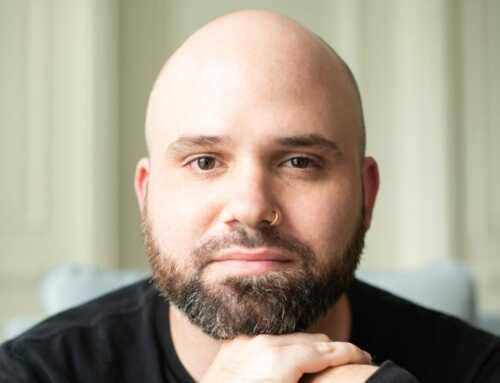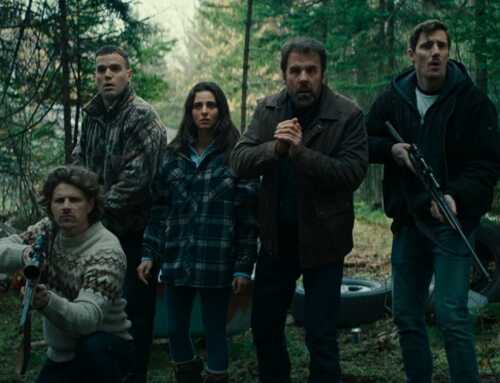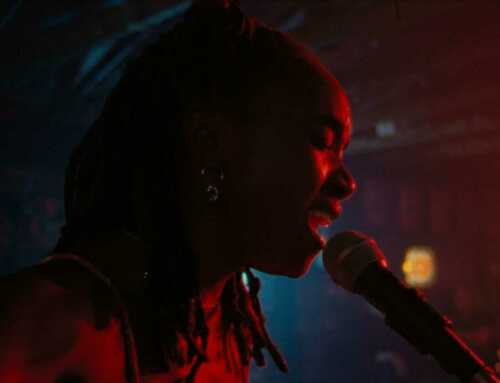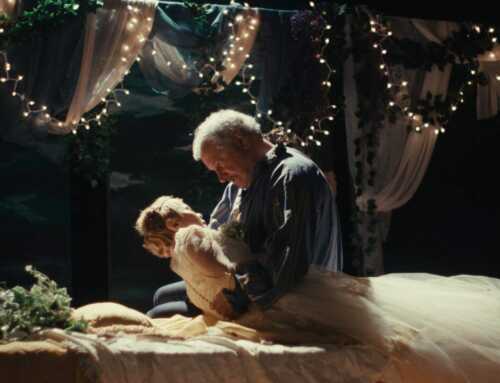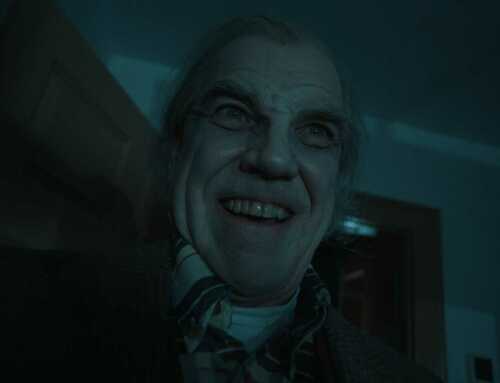Anchorage is a two-man show between director Scott Monahan and writer Dakota Loesch. The friends also star in the film, playing brothers who attempt to drive a trunk full of opioids from Florida to Alaska. It’s their get-rich-quick scheme that goes horribly, horribly wrong. The film has sudden eruptions of violence and strong performances by both leads.
Recently, the film played at the Jim Thorpe Independent Film Festival, where we talked to Monahan about his feature debut.
How did you get into filmmaking?
I went to school for acting in Virginia. I had to make a decision to either move to Los Angeles or New York. The conservatory I went to was a bit of a music theater factory that sent people to New York City. I was one of the few students who moved to LA. I got into filmmaking by surrounding myself with filmmakers, watching their stories, and getting to work on their projects. That opened the accessibility aspect to me, especially with the digital age of filmmaking now. A lot of my friends had gone to film school. I was able to learn from them and their experiences. The type of sets I worked on were fun, including short films and improv. Everyone helped each other out. I started to see and understand the collaborative process of filmmaking. That’s what drew me in.
When did you start working on Anchorage?
The idea occurred in March 2019. Dakota and I planned on shooting in June, but then that got pushed to July and then November. Those postponements gave us more time to develop the project. We shot it in January of 2020.
You’ve commented that Anchorage is a very personal story for you. Can you talk about that more?
Opioids walk through your front door through a prescription. I’ve been an athlete my whole life. In college, I would be overprescribed medication for surgery or injury. It hooks you fast. I was lucky enough to crawl out of that. The arts really helped me with that, but a lot of our friends and family members were not able to and aren’t with us anymore. Others are still trapped in that cycle. The drugs are made and designed to be addictive. Once they get a hold of you, it doesn’t matter what age, race, color, or creed you are, they can consume you. Once you can’t get them from prescriptions anymore, then you have to find other ways. We didn’t just look at a hot button issue, and say, let’s make a movie about this. When Dakota and I met and talked about our mutual experience and the traumas and tragedies we’ve witnessed and been around, we thought we could tell this story in a way that doesn’t demonize the people trapped in this system, while also not glorifying it either.
What were some of the challenges and rewards of crafting this film on a microbudget?
Limitations provide you with creativity, I think. You must find ways that you can use that to your advantage. When writing the script, we knew how much money we had going in. With a limited budget, we found a way to pare it down and focus on character first and story first. We emphasized the world-building aspect. It was more of a strength than a hindrance.
What was it like to star in the film as Jacob and also direct? How did you handle both duties?
Meredith Treinen is my partner and the associate director of the film. That title doesn’t really exist in filmmaking so much, but she wasn’t an assistant director. She wasn’t going around and keeping everyone on schedule. While I was acting, she was able to make sure the performances were in line with the story. I wasn’t doing it all alone. Our cinematographer, Erin Naifeh, also had her own input. That all enabled me to feel like everyone had their areas covered, so when it was my turn to focus on the acting, I could do that. As soon as we cut, my brain shifted and checked in with all the departments. I had a team around me who was so supportive and knew what I was taking on. They were patient and understanding. It really made it a lot easier than it might sound.
Your background is in theater and improv. How do you think that benefits you as an actor and director?
As a director, it really helps with the collaborative nature of filmmaking. The theater with Ceasless Fun, and theater I’ve done before Ceaseless Fun, is devised, so we start with nothing and come up with something together in a room. That helps with the collaborative element, releasing that ego, and trusting each other. As an actor, I love improv comedy. Dramatic improv is also one of my favorites. You can live in a character for a whole day if you want to. Dakota and I wanted to bring what we love about immersive theater into the filmmaking process. Some of that included the process itself.
Setting plays such a crucial role in Anchorage. Can you talk about the filming locations?
We filmed up the 395, from about Victorville up to Lone Pine, in that region, and a little bit into Death Valley. I had driven down that way a lot coming from Yosemite. Even before I made a short, I thought there was a story there. Once Dakota and I figured out what part of the story we wanted to tell, we had to figure out a location. We took a trip up there, and, as with everything with this movie, it’s like the waters just parted. We would show up and the sun would fall through the ceiling in a way that would highlight graffiti on the floor that said “kill.” We knew we had our spot.
Can you talk about the role and theme of masculinity in the film?
I grew up in a military household, with a father in the Marines. I was in ROTC and played sports. There was a masculinity that the world and men wanted me to be, and then, there was a side of me that the women in my life were inspiring me to be. Most of the time, they are conflicted. Once I got to a certain age, I started resisting the artistic side of myself. Specifically, for the two brothers in the film, it’s about this thing that we do as men where we struggle to show affection and complement each other. There’s such a roughness. With these two characters, we wanted to explore that. The only way we knew how to do that is through our own experience. It was very important that you could see the love they have for each other, but they never say it to each other while they’re both conscious. It represents that kind of struggle in a less brazen way. Instead of having them mistreat women or another group of people, we wanted to show the toxicity between the two of them.
What are you working on next?
I’m working on a feature right now that I’m really excited about. My first short was a love story. Anchorage is about brothers and drugs. The next one will be unlike those two, but there will be some similarities, as I’m starting to find my voice. I’m also very excited about genre films. I love horror and science fiction, so that’s not out of the wheelhouse, either.
You’ve been to several film festivals. How do you think the Jim Thorpe Film Independent Festival compares to some of the others? What makes this one different?
First, there’s a certain magic in the air of the town that you feel. There’s a little mysticism, like the fog in the trees at night. There’s something in the people as well. Some of the most insightful responses from audience members that I’ve had from any festival have happened here. Having come here in 2019, it felt like I was coming home in a sense. One of the best parts of film festivals is the community that you find in these little homes away from home. This festival is not only a beautiful destination but a beautiful community filled with lovely people. You also get to see some incredible films along the way.
Thank you so much for taking the time to chat with us, Scott.


